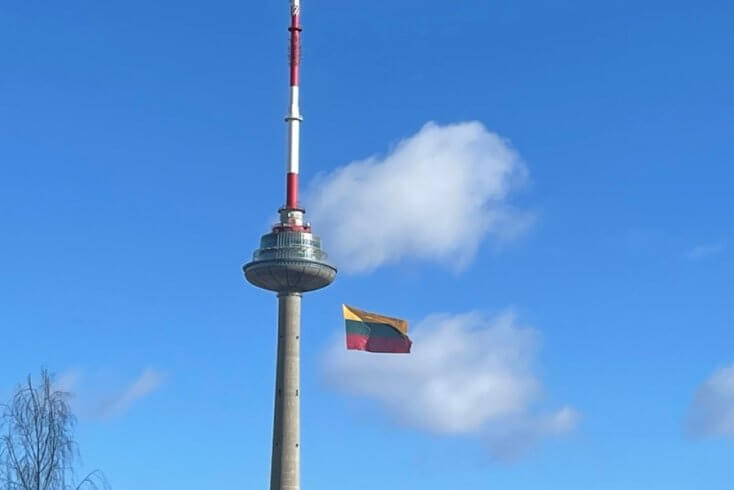Nearly 40 years after nuclear disaster, radioactive substances still dangerous, scientist says

April 26, Pozirk. The Chernobyl accident occurred precisely because radiation was not taken seriously, Siarhiej Biesarab, a radiation scientist, has told Pozirk.
The No. 4 reactor of the Chernobyl Nuclear Power Plant exploded in the early hours of April 26, 1986.
Although the plant is located in Ukraine, about 70% of the radioactive fallout from landed in Belarus, heavily contaminating one-fourth of the country, one-fifth of its agricultural land and affecting at least 7 million people.
“In 1986, most contamination was on the surface and could be measured by simple dosimetry devices. In 2024, most of the contamination is hidden in food, trees and plants, and can only be detected by spectrometry,” Biesarab said referring to an analytical technique that is used to identify chemicals by shattering them into smaller fragments and determining the masses of those fragments.
“A usual cheap household dosimeter no longer shows anything. This applies to caesium and strontium, which are well known to the media, but also to alpha ray emitters such as plutonium and americium. And it turns out that alpha radiation is 20 times more dangerous,” he said.
For instance, when villagers burn wood to heat their houses, “they put the wood’s radionuclides back into the active state they were in 1986.”
Locally, on a piece of fabric, a 1 μm small alpha particle of plutonium or americium emits 50,000 rads per hour. But even a dose as small as 20,000 rads per hour leads to carcinogenesis, he said.
“So the radiation from this dust particle exceeds all safety limits. Suppose a plant containing plutonium ions burns, sending ash and dust into the air. A very stable aerosol is formed. The wind carries it wherever it blows. Scientists have found that dust storms transport and distribute isotopes such as cesium, strontium, americium and plutonium.”
Storms are mostly recorded in Belarus’ contaminated areas, he noted.
In addition, scientists say, storms occur regularly in the spring-summer period.
“Seasonal wind carries them across the country, so it is advisable not to do any agricultural activity during this time,” Biesarab said.
From April to June, fires, construction and the movement of vehicles are not desirable in the contaminated areas.
Although officials are aware of it, the military is building fortifications there and farms cultivate land. “This is just crazy,” he said.
Also read: Caesium-contaminated area shrunk to 12 percent of Belarus – official
- Politics
- PoliticsVilnius warns of mirror measures should Minsk confiscate Lithuanian trucksThe material is available only to POZIRK+
- PoliticsMEPs condemn Belarus' hybrid attacks against Lithuania, call for new sanctionsThe material is available only to POZIRK+
- Politics, SocietySieviaryniec, 19 other released prisoners arrive in VilniusThe material is available only to POZIRK+
- Politics, Security
- EconomyMinsk’s gross domestic product growth slows downThe material is available only to POZIRK+
- SocietyBelarusian driver charged with unintended traffic offence after falling asleep at the wheelThe material is available only to POZIRK+
- EconomyUpper chamber approves draft national budgetThe material is available only to POZIRK+
- Politics, SecurityEU neighbors report three irregular crossing attempts on December 16The material is available only to POZIRK+
- Politics, SocietyNew convictions, censorship incidents reported across BelarusThe material is available only to POZIRK+
- Politics, Security
- Politics, Society
- Politics
- PoliticsInterior ministry brands historical reenactment club extremist groupThe material is available only to POZIRK+
- EconomyAgricultural production down 0.02 percent in January-NovemberThe material is available only to POZIRK+
- SocietyState media considerably raise subscription fees, independent periodicals banned from circulationThe material is available only to POZIRK+
- PoliticsRights groups designate 7 as political prisonersThe material is available only to POZIRK+
- Politics, SportUkraine’s Verkhovna Rada wants Belarus’ football teams banned from UEFA eventsThe material is available only to POZIRK+
- SocietyBelarus’ police heightens security at schools following Russia’s stabbing attackThe material is available only to POZIRK+
- Politics, SocietyNo signs of change in policy of repression – UN expertThe material is available only to POZIRK+



